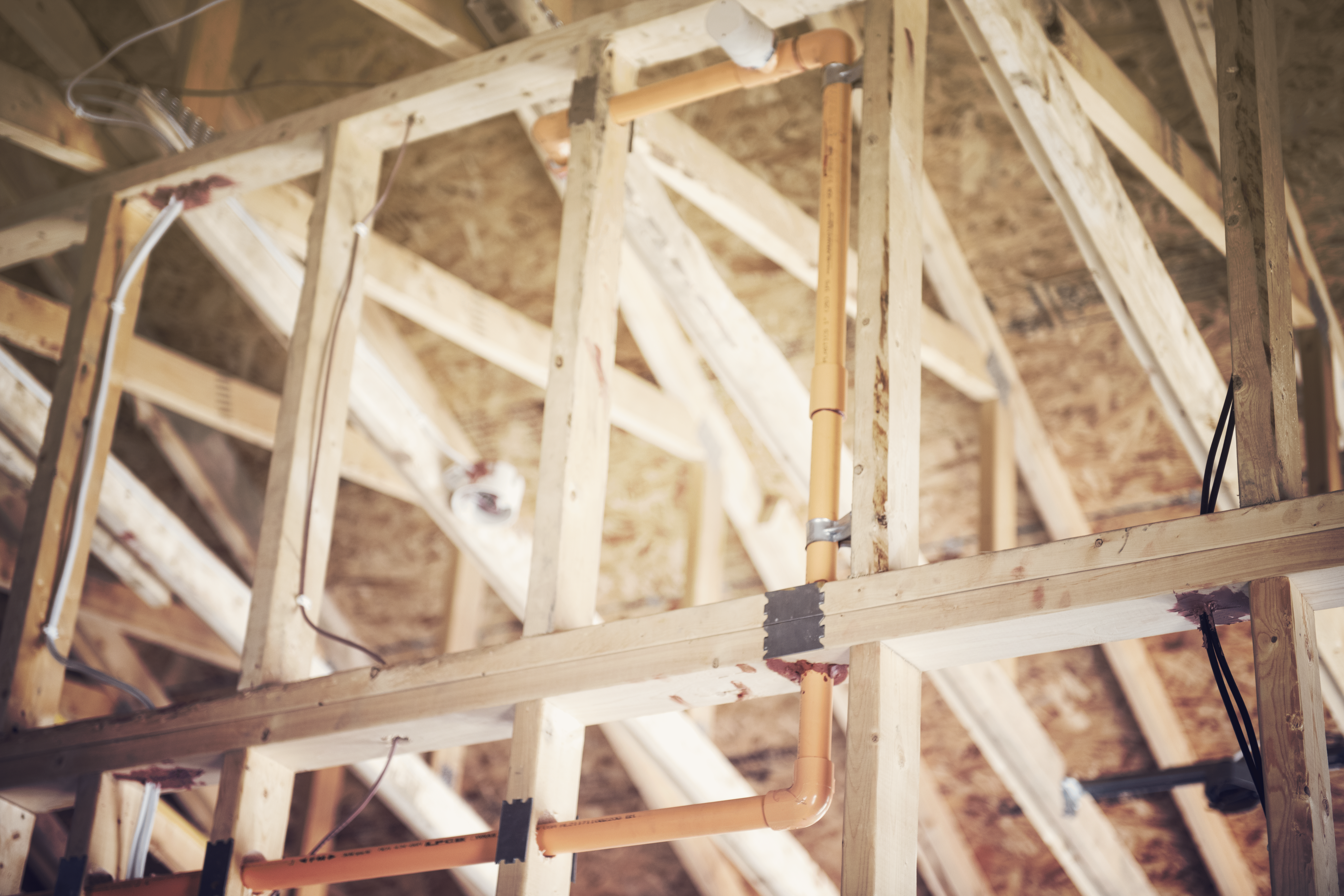How Does BlazeMaster® CPVC Compare to Steel for Use in Combustible Concealed Spaces?
Here are two facts that we would like to share with designers, specifiers, installers and building owners regarding the use of BlazeMaster® CPVC in combustible concealed spaces:
- Combustible concealed spaces not requiring sprinkler protection by NFPA standards 13R and 13D may be piped using BlazeMaster CPVC.
- Combustible concealed spaces requiring sprinklers – such as attics (open wood truss construction) or crawl spaces – may be piped using BlazeMaster CPVC provided special UL-listed sprinkler heads from Tyco, Viking, Reliable or Globe are utilized. The installation must be installed per the sprinkler head manufacturer’s listing and installation instructions.
This is significant because while steel pipe is allowed in all types of applications, the advantages of CPVC over steel such as easier, faster installation and maintenance plus lower upfront costs make CPVC the hands-down choice whenever it can be used.
Using BlazeMaster CPVC to your advantage
BlazeMaster CPVC can save time and money in both retrofit and new construction in areas that would not normally be considered “living space.”
It can be run through combustible concealed spaces that don’t require sprinklers, such as small closets or bathrooms, to attic areas that may then be sprinklered using approved sprinkler heads.
It can also be run in these areas and sprinklered through a sidewall to a living space. Take, for example, a retirement home where a branch line loop comes into each suite from a corridor run. The first space the line encounters is a closet, which requires no sprinkler and can be used as a chase. The run can continue to the plenum for ceiling sprinklers, or, the closet can include a sidewall head into the living space.
In an attic installation that must be sprinklered, attic sprinklers specifically listed for use with CPVC must be used at all times per NFPA 13. BlazeMaster CPVC must be protected with 6” (152 mm) of non-combustible insulation on top of the pipe in this configuration.
Why not just use steel?
Here are three reasons why it’s always best to install BlazeMaster CPVC when allowed in combustible concealed spaces:
- Lower initial cost. Steel pipe will always be more expensive than BlazeMaster CPVC.
- Faster, easier installation. Steel is heavy, sometimes requiring special equipment to move around a job site and, at times, requiring two or more installers. In tight, cramped spaces, it can be even more difficult to maneuver. It also requires torches and threading machines to fabricate and join the system. BlazeMaster CPVC is light by comparison and can be quickly installed by one person using cutting tools and solvent cement. That translates to installation savings.
- Long term maintenance savings. Steel pipe is subject to corrosion from harsh water conditions and scaling from hard water. That can lead to system leaks and failures and/or reduced flow, inhibiting the fire sprinkler system’s ability to perform the tasks for which it was designed – save lives and protect property.
If you ever have a question about BlazeMaster CPVC and its use in combustible concealed spaces, do not hesitate to contact us. We can help you save time and money by providing the most cost-effective, reliable fire protection system available.


